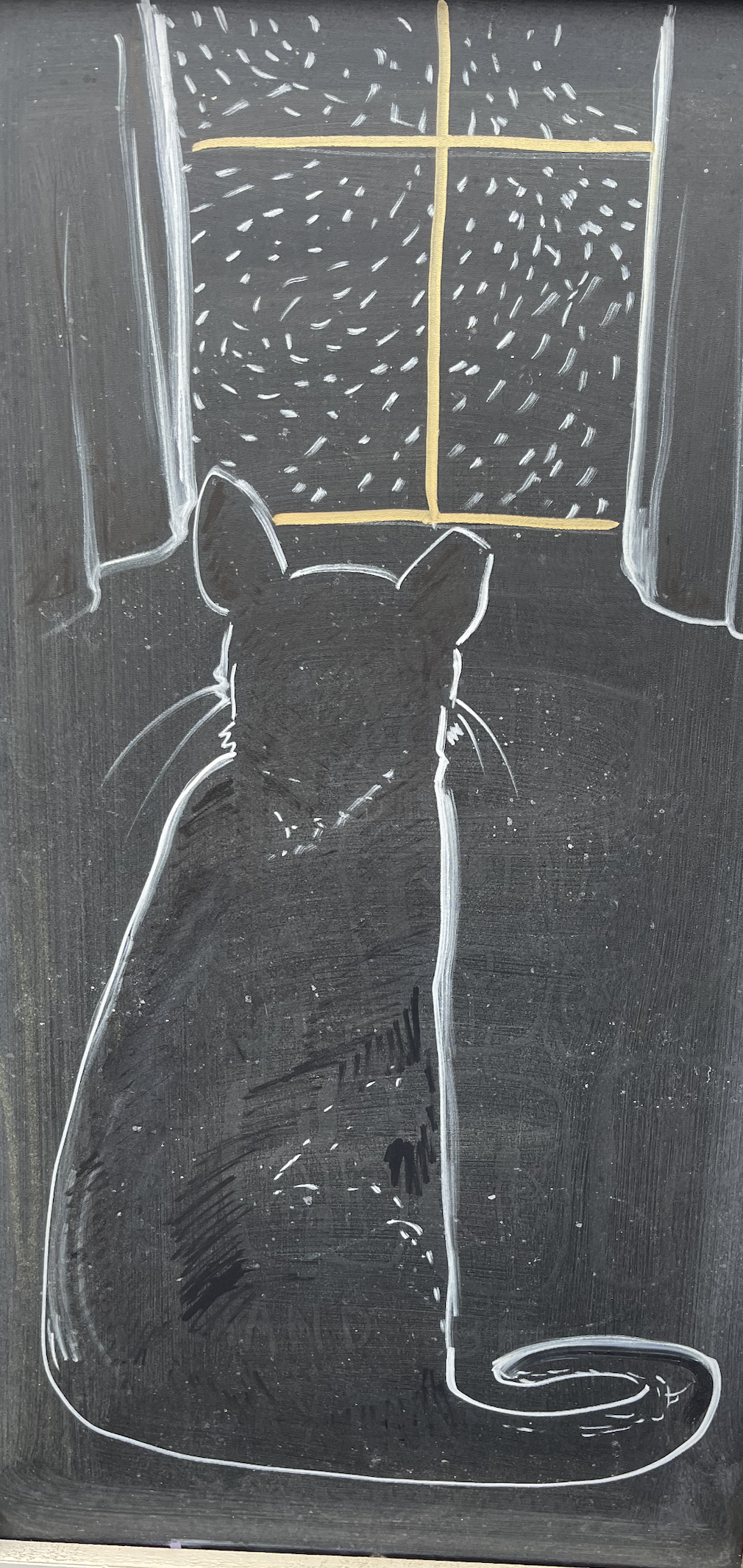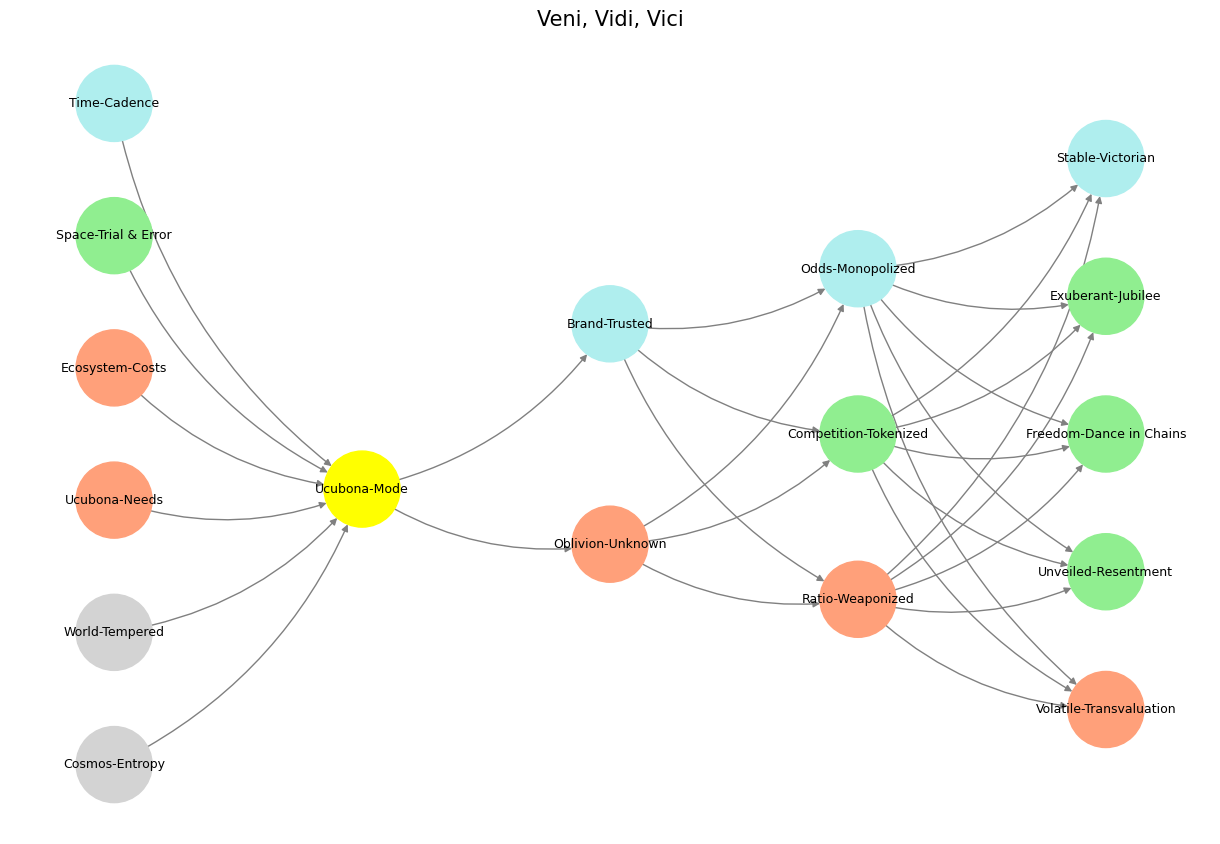Stable#
Je pense, donc, je suis. I think, therefore, I am. Or do I follow? The ambiguity unsettles me. Suis is both existence and movement, being and becoming, a node and an edge at once. And if I am a node, am I singular or merely an intersection of something vast? The world has called me self-sufficient, but self-sufficiency is a conceit granted by a network that predates and extends beyond me—one I did not construct, only inherited. Family, love, support: all these have flowed through me without my deliberation, like an unseen current sustaining a body at sea. I have moved forward, but was I moving myself? The ambiguity is there in the first step.
Thou art a cosmic net
– Yours Truly
Je pense, donc, je vois. Thought opens the eye. But sight, once granted, is a terror. What is seen cannot be unseen, and suddenly, the horizon is not a limit but an invitation to vertigo. The cosmic network stretches beyond the visible, past even the reckoning of Einstein’s relativity. What is an individual but a barely perceptible flicker in the vast quantum entanglement of things? The sky swarms with stars, but Van Gogh’s swirling brushstrokes capture what the equations do not—the overwhelming beauty, the madness of scale. It is too much. To stare too long into the vastness is to dissolve into meaninglessness. Sight demands orientation. The infinite must shrink back into the local.

Fig. 36 This sequence of words suggests a progression of self-discovery, agency, and transcendence. It moves through existential states and conscious choices, forming a clear arc of individuation. 1. Suis (Am / Follow): This could indicate either the state of being (“I am”) or the act of following a path. The ambiguity between existence and movement is compelling—one either is or follows. 2. Voir (To see): The first moment of awareness. Sight, revelation, or perhaps an internal vision. The moment of perception that initiates understanding. 3. Choisis (Choose): Agency enters the equation. After seeing, one must decide. There’s an assertion of will, breaking away from passivity. 4. Deviens (Become again / Return to being): A fascinating word, hinting at both transformation and cyclical return. The prefix de- suggests either undoing or re-becoming—perhaps a Nietzschean eternal return or an oscillation between past and future selves. 5. M’ëlève (I elevate myself): The final state—transcendence, ascension, overcoming. This suggests growth beyond prior limitations, possibly into a state of self-actualization. It reads like a condensed journey from passive existence to conscious becoming, echoing themes of self-overcoming in Nietzsche and individuation in Jung. The progression is cyclical yet upward-moving—perhaps an eternal return, but with an iterative ascent rather than a mere loop.#
Je pense, donc, je choisis. If to see is to be disoriented, then choice is a lifeline. But how much of my choosing has been an illusion? A current carried me here, but choice means agency, a hand steering rather than drifting. Yet choices also bind. The very act of deciding creates limits, eliminating paths unseen. In a network, every choice is an edge, linking one node while severing another. And so, I stand at another threshold, aware of all that has been chosen for me, aware of all that I have failed to choose. What remains?
You talk very familiarily of the Absolute, Larry.
– Somerset
Je pense, donc, je deviens. Return. Re-becoming. What does it mean to return when there was never a single point of origin? Yet there is always a call back—not regression, but a re-orientation. The network is too vast, too cold in its endless reach. The return is to the neglected edges, the weak connections, the overlooked nodes. I was hungry, and you fed me; I was in prison, and you visited me. Love neighbor, love self, love God. But which of these have I done well? Self—yes, I have done well enough there. Neighbor—only to the nearest ones, not the far edges where the signal weakens. And God? God is the entire network, the cosmic net, with its neglected and unvisited edges, the vastness stretching beyond my comprehension.
Je pense, donc, je m’élève. This is the cadence, the tragic lift from pain to meaning. A return that is not a loop but a rising. Not an escape from the physical, but an ascent beyond its constraints. Meaning is not physical; it is not another node in the network but the force that animates it. Elevation is not an unraveling but an intensification, a movement from the indistinct vastness to something real. The cadence of tragedy is this: suffering transmuted into something that remains. A meaning that outlasts. A final note that echoes in the silence after all else is gone.
Show code cell source
import numpy as np
import matplotlib.pyplot as plt
import networkx as nx
# Define the neural network fractal
def define_layers():
return {
'World': ['Cosmos-Entropy', 'World-Tempered', 'Ucubona-Needs', 'Ecosystem-Costs', 'Space-Trial & Error', 'Time-Cadence', ], # Veni; 95/5
'Mode': ['Ucubona-Mode'], # Vidi; 80/20
'Agent': ['Oblivion-Unknown', 'Brand-Trusted'], # Vici; Veni; 51/49
'Space': ['Ratio-Weaponized', 'Competition-Tokenized', 'Odds-Monopolized'], # Vidi; 20/80
'Time': ['Volatile-Transvaluation', 'Unveiled-Resentment', 'Freedom-Dance in Chains', 'Exuberant-Jubilee', 'Stable-Victorian'] # Vici; 5/95
}
# Assign colors to nodes
def assign_colors():
color_map = {
'yellow': ['Ucubona-Mode'],
'paleturquoise': ['Time-Cadence', 'Brand-Trusted', 'Odds-Monopolized', 'Stable-Victorian'],
'lightgreen': ['Space-Trial & Error', 'Competition-Tokenized', 'Exuberant-Jubilee', 'Freedom-Dance in Chains', 'Unveiled-Resentment'],
'lightsalmon': [
'Ucubona-Needs', 'Ecosystem-Costs', 'Oblivion-Unknown',
'Ratio-Weaponized', 'Volatile-Transvaluation'
],
}
return {node: color for color, nodes in color_map.items() for node in nodes}
# Calculate positions for nodes
def calculate_positions(layer, x_offset):
y_positions = np.linspace(-len(layer) / 2, len(layer) / 2, len(layer))
return [(x_offset, y) for y in y_positions]
# Create and visualize the neural network graph
def visualize_nn():
layers = define_layers()
colors = assign_colors()
G = nx.DiGraph()
pos = {}
node_colors = []
# Add nodes and assign positions
for i, (layer_name, nodes) in enumerate(layers.items()):
positions = calculate_positions(nodes, x_offset=i * 2)
for node, position in zip(nodes, positions):
G.add_node(node, layer=layer_name)
pos[node] = position
node_colors.append(colors.get(node, 'lightgray'))
# Add edges (automated for consecutive layers)
layer_names = list(layers.keys())
for i in range(len(layer_names) - 1):
source_layer, target_layer = layer_names[i], layer_names[i + 1]
for source in layers[source_layer]:
for target in layers[target_layer]:
G.add_edge(source, target)
# Draw the graph
plt.figure(figsize=(12, 8))
nx.draw(
G, pos, with_labels=True, node_color=node_colors, edge_color='gray',
node_size=3000, font_size=9, connectionstyle="arc3,rad=0.2"
)
plt.title("Veni, Vidi, Vici", fontsize=15)
plt.show()
# Run the visualization
visualize_nn()


Fig. 37 Terra, Celsius, FTX. Contemplate the following: world (twitter), money (terra), bank (celsius), exchange (ftx), yields (hedgefunds). IT’S A REALLY, surprisingly user-friendly experience,” says Stephen Askins, a shipping lawyer, of his interactions with the Houthis, the militia that has been attacking commercial ships in the Red Sea for more than a year. “You write to them, respectfully. They write back, respectfully, and wish you a happy passage.” Source: Economist#
This sequence of words suggests a progression of self-discovery, agency, and transcendence. It moves through existential states and conscious choices, forming a clear arc of individuation.
Suis (Am / Follow): This could indicate either the state of being (“I am”) or the act of following a path. The ambiguity between existence and movement is compelling—one either is or follows.
Voir (To see): The first moment of awareness. Sight, revelation, or perhaps an internal vision. The moment of perception that initiates understanding.
Choisis (Choose): Agency enters the equation. After seeing, one must decide. There’s an assertion of will, breaking away from passivity.
Deviens (Become again / Return to being): A fascinating word, hinting at both transformation and cyclical return. The prefix de- suggests either undoing or re-becoming—perhaps a Nietzschean eternal return or an oscillation between past and future selves.
M’ëlève (I elevate myself): The final state—transcendence, ascension, overcoming. This suggests growth beyond prior limitations, possibly into a state of self-actualization.
It reads like a condensed journey from passive existence to conscious becoming, echoing themes of self-overcoming in Nietzsche and individuation in Jung. The progression is cyclical yet upward-moving—perhaps an eternal return, but with an iterative ascent rather than a mere loop.

